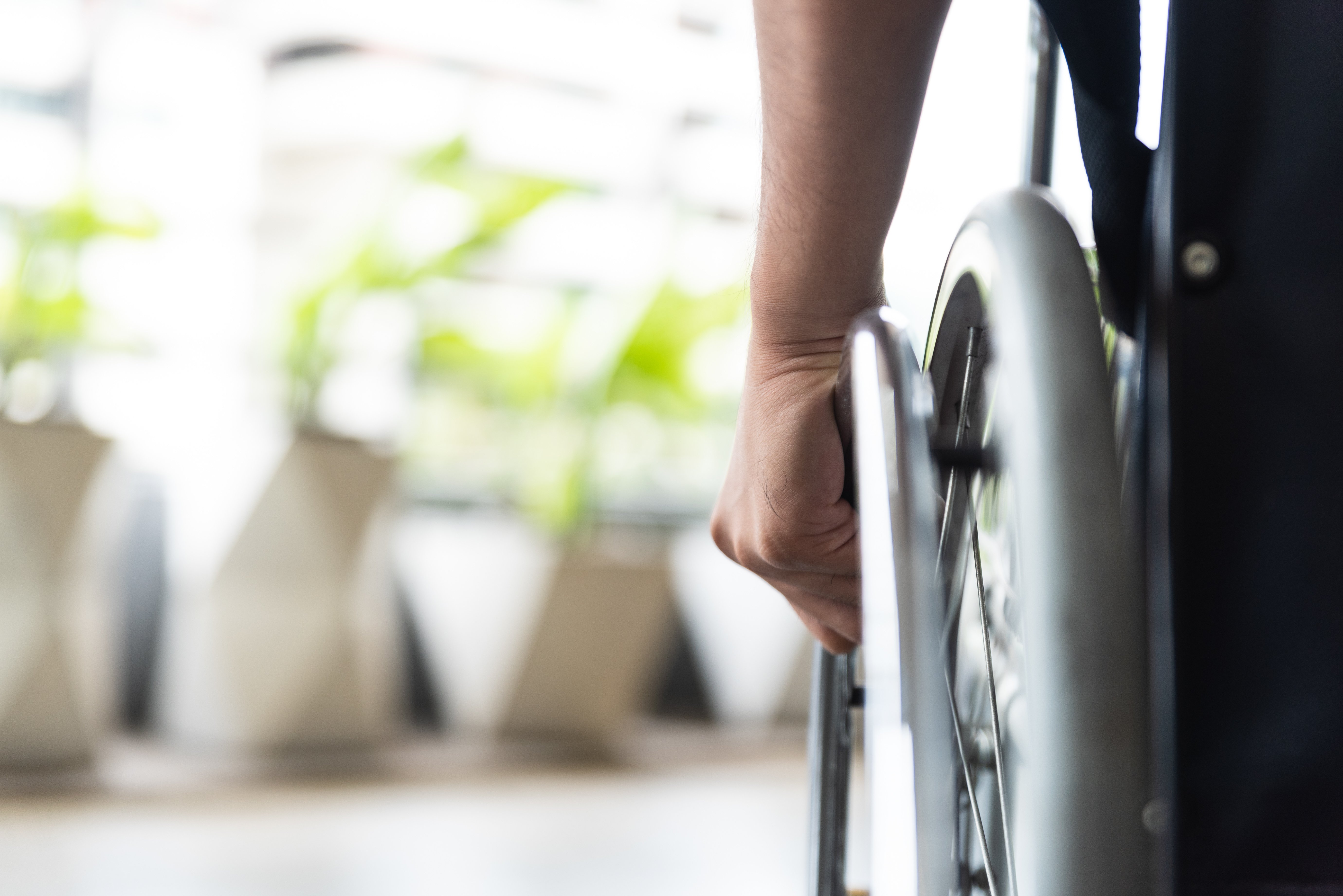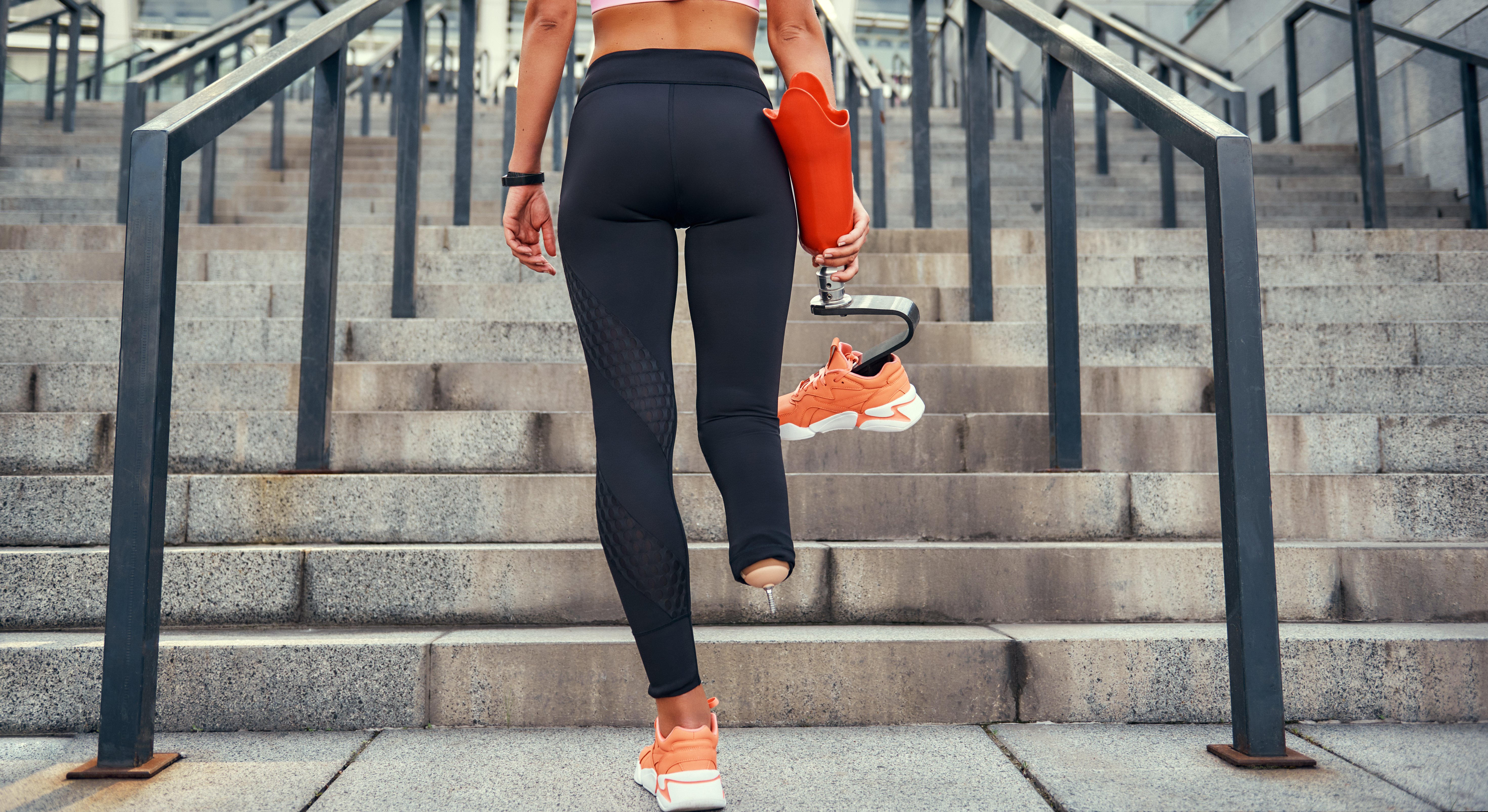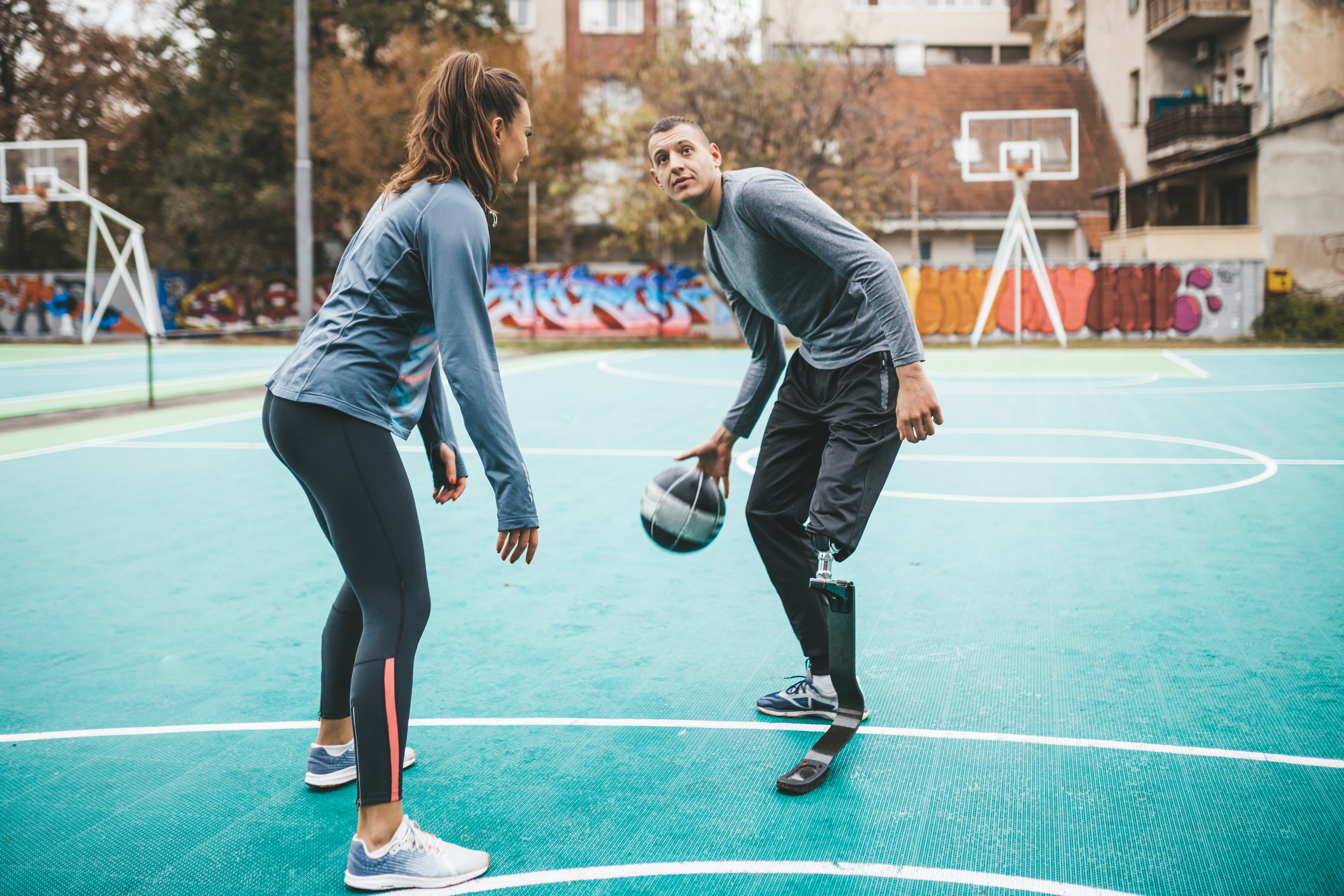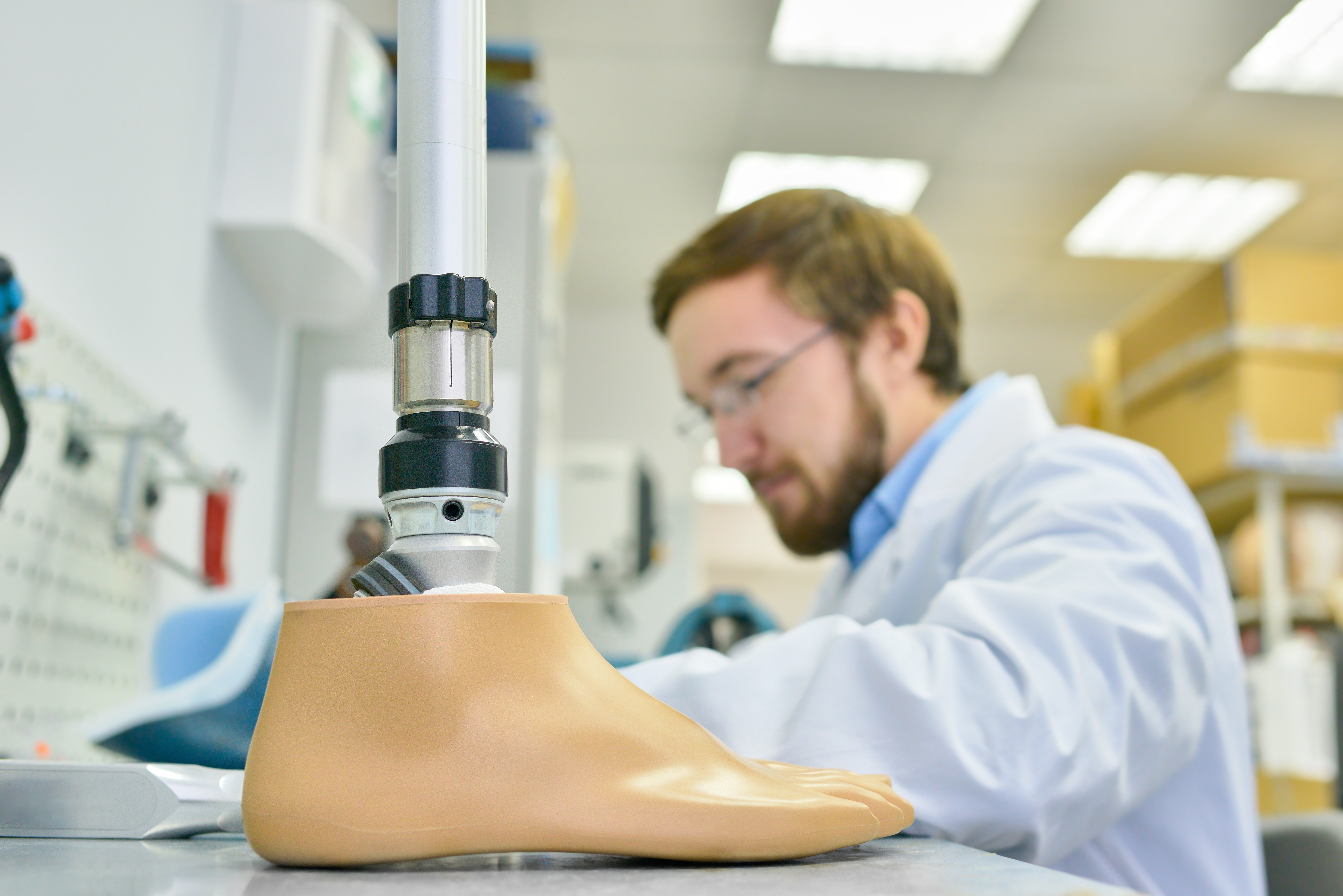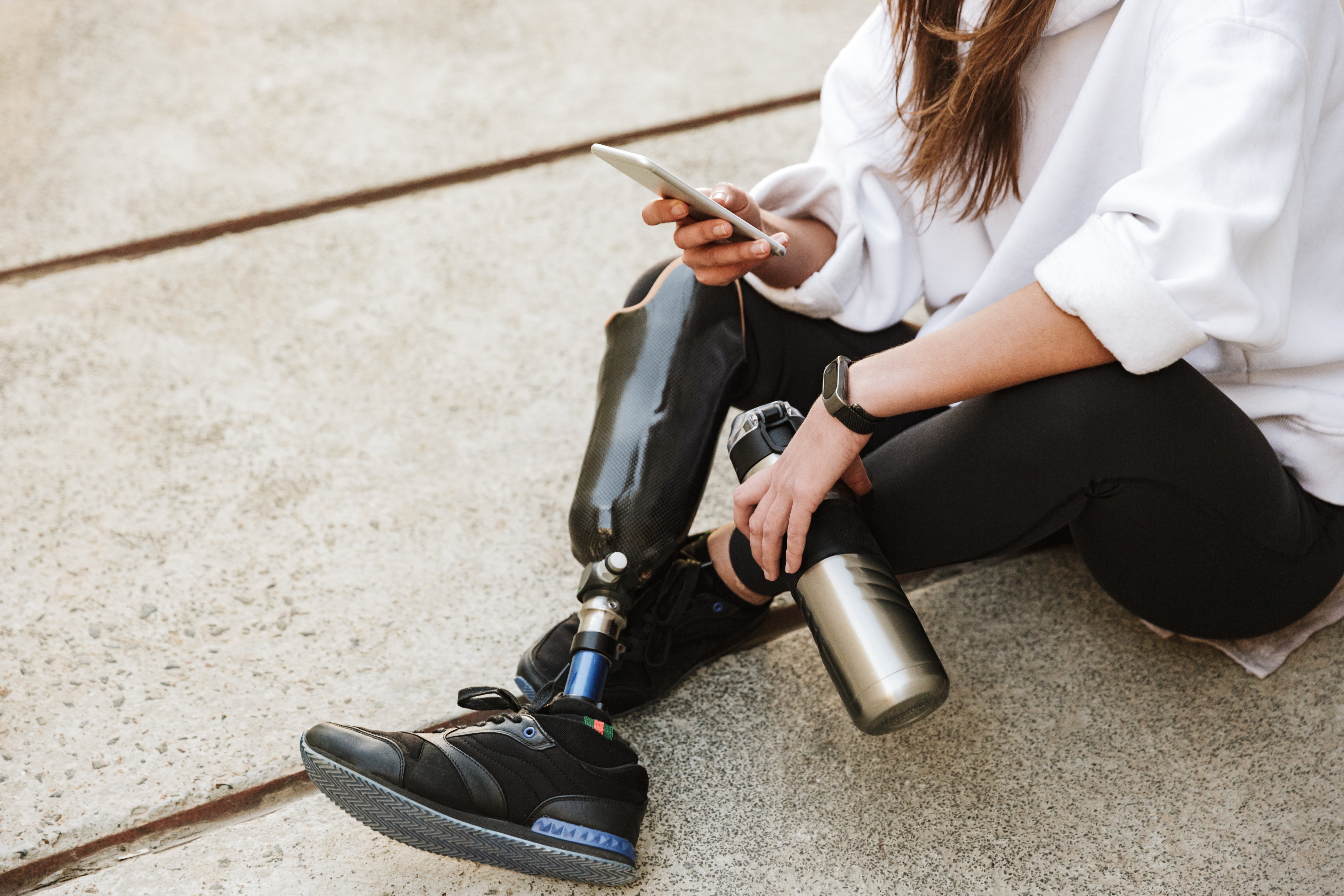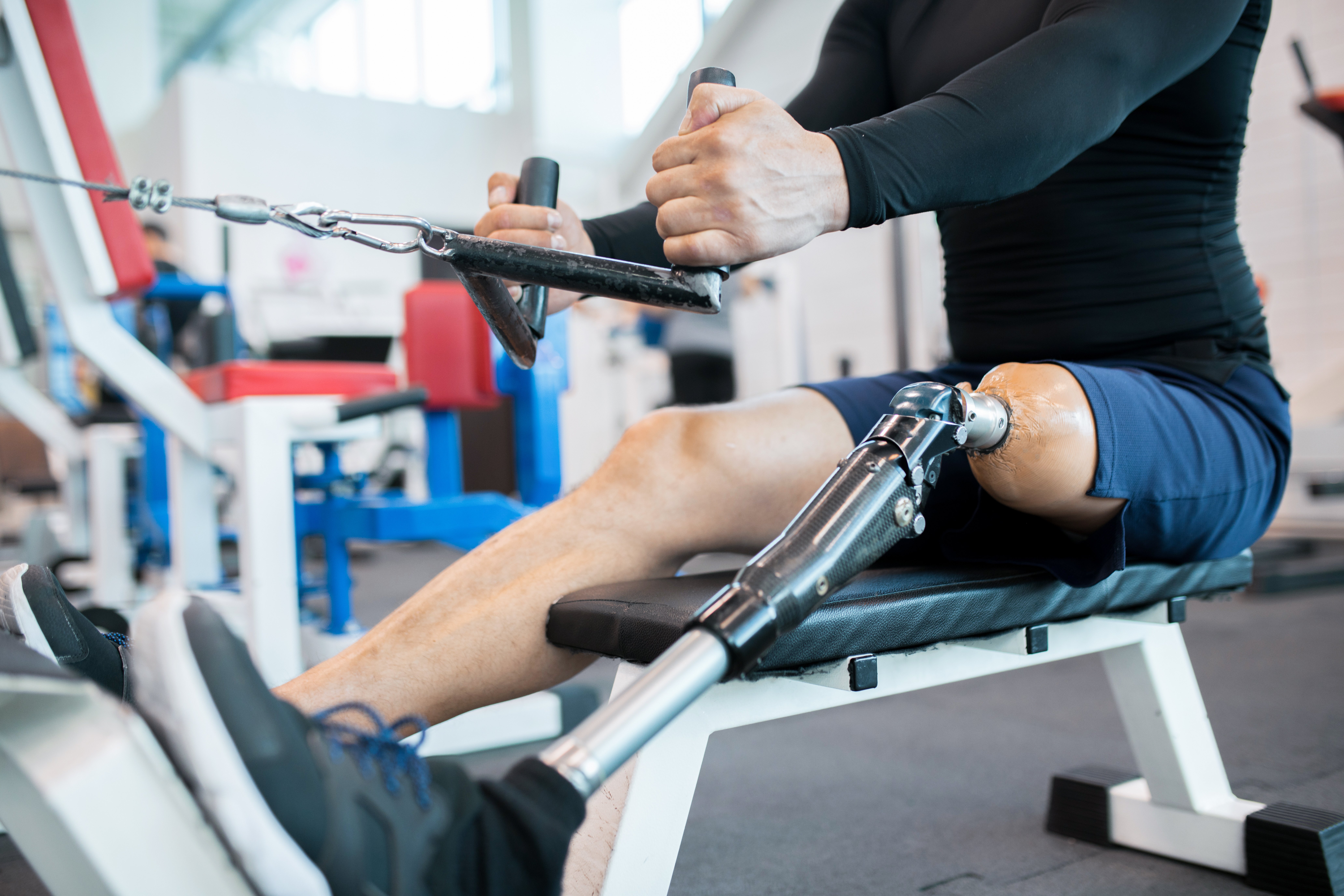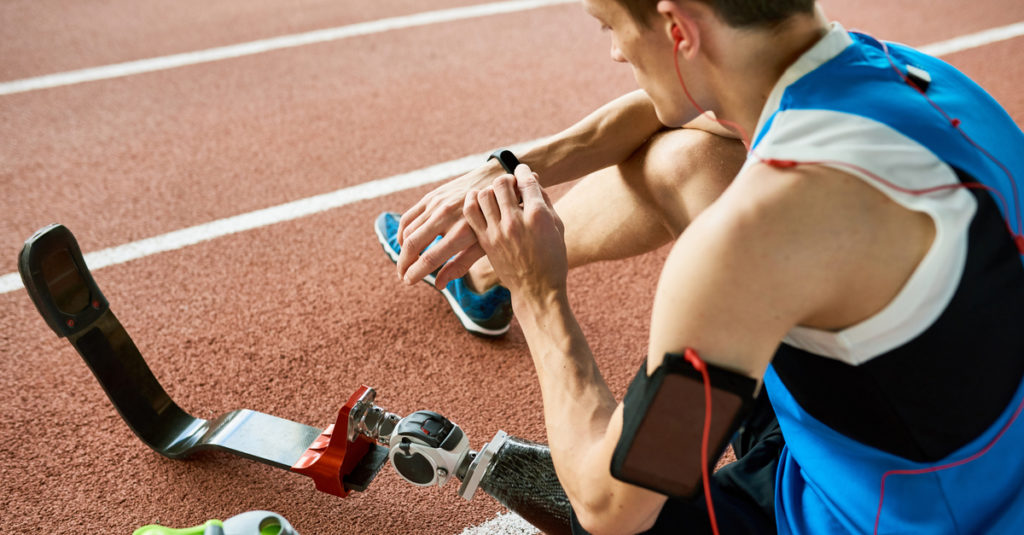Our Response to COVID-19
It is of utmost importance to us that our patients, staff, and families stay well through this unprecedented time. With the emergence of COVID-19 in the United States, we are closely monitoring statements and recommendations from the Centers For Disease and Control (CDC) and the World Health Organization (WHO).
At this time, we will resume our normal hours of operation while implementing several preventative measures in our facility.
We are implementing the following to protect patients, staff, and the community from the potential spread of illness.
- All visitors and staff must arrive wearing a mask. A mask will be provided if needed.
- One (1) parent/caregiver/family member is allowed to accompany the patient. We ask all other family members and visitors to please stay home.
- Placing additional hand sanitizer in patient rooms, as well as patient waiting areas.
- Encouraging employees to closely monitor any potential symptoms of illness, regularly wash hands, and limit the amount of contact with surfaces and others.
- Routinely sanitizing surfaces, patient rooms/waiting areas, and equipment.
We request that you reschedule your appointment if:
- You and/or the patient have experienced the following symptoms within the last 7 days
- Fever
- Cough
- Shortness of Breath
- Flu-Like Symptoms
- Runny Nose/Nasal Congestion
- Sore Throat
- You and/or the patient have traveled to or had close contact with someone who has traveled to high risk countries.
- You and/or the patient have tested positive for or been exposed to someone with COVID-19.
If you have any questions or concerns please call our office at (205) 324-7897. We hope to provide you with any assistance necessary while navigating this unprecedented time, and thank you for your patience in advance.
An amputation is the loss of one of the body’s extremities: arm, hand, leg, or foot. Routine amputations are done surgically due to complications from diabetes or other diseases, but sometimes traumatic accidents can result in limb amputation. Under certain circumstances, if an amputation leaves a person unable to work, the amputee might be eligible for Social Security disability benefits.
Amputation alone does not automatically qualify you for disability benefits unless both hands are amputated, a leg is amputated through the hip joint, or you have a pelvic amputation. For any other amputations, you have to prove to Social Security that you are unable to work. The Social Security Administration has a checklist of possible disability coverages, but you still may be able to prove your disability even if you don’t meet the official listing requirements.
Official Listing Requirements
According to the Social Security Administration (SSA), you must have suffered one of the following to be considered for disability:
- Amputation of both hands
- Amputation of one hand and one lower extremity at or above the ankle, interfering with the ability to walk
- Amputation through the hip joint (hemipelvectomy) or pelvis (hip disarticulation)
- Amputation of one or both lower extremities resulting in the inability to use a prosthetic device or a cane to walk properly
The inability to walk, as defined by the SSA is the inability to walk effectively with two hands while using the assistance of a cane, walker, crutches, or needing help getting to work or using public transportation. An issue that might arise is whether a prosthetic device could help restore the ability to walk or do daily activities. If you are able to use a cane with a prosthetic, this would not qualify you, as you would only need one hand to walk.
Reduced Functional Capacity
Most employees cannot qualify under the above impairment listing, as the use of prosthetic devices would work to assist them, so their disability request claims would be denied. However, you might be able to qualify for disability benefits if your amputation has reduced your functional capacity in such a way that there is no work available given your age, education level, or experience. The SSA will give you a rating based on the type of work it thinks you can do: sedentary, light, medium, or heavy. Also, if your doctor has given specific restrictions such as no crawling, kneeling, or heavy lifting, these will affect your rating.
Your rating or residual functional capacity (RFC) will determine the job the SSA chooses for you.
The lower your RFC, the fewer jobs you can do. Still, if you’re under 50 years old, the chances of getting disability benefits through a medical vocational allowance are low.
For example, if you have a sedentary RFC, high school education, and limited skills, you might be considered disabled if you are over 50. However, if you are younger than 50 and illiterate, the SSA will presume you can learn a new job.
Medical Evidence
The SSA will request records from your treating doctor and should include proper documentation of your amputation, your ability to use a prosthetic device, and your mobility.
Your doctor should also address the likelihood of long-term issues with your amputated limb, and if your functional limitations will improve or stay the same. In order to get Social Security disability benefits, your disability must last at least 12 months.
Apply for Social Security Disability
In general, in order to apply for Social Security disability, you must first fill out the SSA’s standard application, and then complete a medical release form to grant permission to the SSA to view your medical records. After the SSA has examined your medical records and reviewed your application, they will determine your eligibility for amputation disability benefits.
Benefits of Presumptive Disability
When you apply for Supplemental Security Income (SSI), you might be eligible for immediate cash payments if you have one of the following:
- Double amputation of two limbs
- Amputation of a leg at the hip
This type of disability is called presumptive disability and typically applies to people of low income and resources. Generally, with a presumptive disability, the SSA will start making payments right away until your claim is approved or denied. After six months, if your claim is denied, you do not have to repay the presumptive disability benefits.
BioTech Limb and Brace has a team of experts who support the limb loss community. If you have any questions about prosthetics, we can set you up with one of our trusted prosthetists. Contact us today.
You’re home from the hospital and the stitches are gone. You can now begin the healing process and prepare your lower residual limb for a prosthetic device. Here are some tips to prepare you for this transition.
Ways to Position Your Residual Limb
It’s important to keep your residual limb in the right position. This position keeps the muscles from shortening and tightening (contracture), which can cause a loss of range of motion. To avoid contracture, you need to keep your hip and knee straight. Here’s how:
- Always support the weight of your residual limb and keep it from dangling. If you’re sitting in a wheelchair, use an amputee board. This is a flat board designed to support the weight of your residual limb.
- Get used to lying flat on your stomach (proning). Proning is a position that stretches the muscles in your hip. Try to spend at least 15 minutes a day proning.
- Try not to prop your residual limb on pillows for support. Keep your residual limb flat and straight.
- Keep your residual limb close to your intact leg. If it moves outward, this can make walking with a prosthetic device difficult.
Stretch Your Muscles
To prevent contracture, it’s important that you keep your muscles strong and loose. Don’t skip exercises you were taught in the hospital, as they will come in handy when you start walking with a prosthetic device.
Desensitize Your Residual Limb
After your procedure, your residual limb will be extremely sensitive to touch. You need to desensitize it by massaging, rubbing, and tapping the end of your limb. Start with a light touch and then slowly increase pressure. This can help you prepare for the fitting of your prosthetic device.
Shape Your Residual Limb
Swelling is a common problem even after your surgical wound has healed. To help with swelling, your healthcare provider will prescribe a compression stocking to help shape your residual limb. Here are a few tips for a comfortable fitting:
- Wear your compression sock as advised. The compression sock applies pressure which reduces swelling.
- Wear your compression sock for 24 hours a day. Make sure it has a snug fit.
- Visit your prosthetist regularly. Your prosthetist can monitor your residual limb and help with the fitting process.
Proper Care and Hygiene
Proper hygiene and care of your residual limb are vital to prevent infection and speed up the healing process. Here are a few ways to keep your residual limb clean:
- Use warm water and an antibacterial soap to clean your limb at least once a day.
- Use a washcloth to gently wash the entire surface of the residual limb. Make sure to pay attention to the skin behind your knee.
- Dry your residual limb. This helps to keep moisture out of your compression sock.
- Wear a clean compression sock daily. To clean, wash each sock with mild soap and water. Dry thoroughly to remove any acid or salts left behind by sweat.
Contact Your Healthcare Provider
Remember, you are the best advocate for your own health. If something seems off, or you experience any of these sudden changes, contact your healthcare provider.
- Skin separation along the scar
- A smell coming from your residual limb
- Redness, swelling, or warmth around the scar
- Pus that is yellow, thick, or brownish gray
- An increase in pain or tenderness
- A fever higher than 100.4 °F
Whether you’re new to prosthetic devices or need a proper fitting, BioTech is here to help. Contact us today for more information.
A new year is a great time for firsts, picking up old habits, trying new hobbies, or if you’re athletic, a new sport. Not every sport requires you to invest in a specialized prosthesis, as some are designed to handle rigorous activity. However, when your daily prosthetic device can’t deliver that extra support, you risk damaging your prosthetic. Various companies offer different variations for people looking for a prosthetic for certain activities.
Read on to learn about the options available for you, so you can get in the game, worry-free.
Prosthetics for Runners
Running blades were first pioneered by American inventor Van Phillips in the 70s and were one of the first prosthetic designs developed for sports. This invention paved the way for mobility that enabled amputees to live more active lifestyles. These blades are constructed from 80 layers of carbon fiber and replicate the natural stance of running. Not exclusively designed for distance runners, running blades are a great option for basketball and baseball players as well.
Prosthetics for Swimmers
Prosthetic legs are a great option if you want to swim, water ski, or just have fun with your kids in the pool—but there are a few things you should consider before using them. Though many modern prosthetics are considered safe for water, including those made with microprocessor technology, they can still be susceptible to water damage. If you’re looking for a low-budget option, consider buying a waterproof prosthetic protector for your current prosthetic.
Also, there are specialized prosthetic attachments like a flipper foot that are available if you really want to glide in the water. If you’re an upper limb amputee, you can purchase a fin attachment.
Prosthetics for Climbers
A climber and his desire to continue doing what he loved created the earliest climbing prosthetics. After losing both of his legs below the knee in a climbing accident, Hugh Herr was determined to scale mountains once again. His earliest designs featured small feet with spiked tips that allowed Herr to get a foothold on ledges.
Though a prosthesis makes climbing easier, many amputee climbers prefer to climb without one at all! Upper limb amputees can also benefit from a hook attachment for their prosthetic device which allows for gripping small ledges and corners.
Prosthetics for Kayakers
Upper limb attachments are available for those looking to venture out on the water, whether it’s casual canoeing on the lake, or exhilarating whitewater rapids. Prosthetic hooks, clips, and spatula devices are available to help steady the paddle and effortlessly glide you through the water.
Prosthetics for Skiers and Snowboarders
Many companies offer prostheses specialized for downhill skiing and snowboarding. Since wakeboarding and waterskiing use the same repetitive motions, they can be used for those activities as well. The snowboard bindings are designed to fit feet securely and properly; below-knee amputees can use a foot attachment to attach to their boards.
Prosthetics for Golfers
Although many one-armed golfers learn to play the sport without a prosthetic, there are attachments available for those who need them. Attachments include a left and right hand design that features a metal tube that slips over the golf club’s shaft for easy gripping.
Prosthetics for Basketball Players
Basketball is a very hands-on sport, and specialized prosthetics are designed with the shape and the size of the ball in mind. These hands are also designed to be angled to suit individual needs.
Prosthetics for Volleyball Players
Hand attachments made of flexible rubber are available for volleyball players so they can play with ease. These hand attachments are designed to allow players to competitively play, by mimicking various hand positions used during a game of volleyball.
Prosthetics for Baseball Players
There are pitching prosthetic hand attachments available in various sizes for hardball and softball to cup the ball for a precise throw. Batting prosthetics also have a clip attached that allows the user to use a precise grasp for a proper swing.
Prosthetics for Hockey Players
Prosthetic hand attachments are available for both ice and floor hockey players. For upper limb amputees, there is a device that slips over the first top half of the hockey stick, allowing for more flexibility similar to that of a human wrist. Plastic grips are also available for proper mobility and handling.
Lower limb amputees can take advantage of a foot attachment that fits inside a hockey skate.
It’s almost a new year—time to start off on the right footing! If you’re looking to start a new sport and need a device that will suit your needs the most, reach out to one of our specialists and we’ll help you find an activity-specific prosthesis.
Contact us today for more information.
Whether a longtime prosthesis wearer or just a beginner, it’s important to have a good relationship with your prosthetist to ensure a successful experience. Consistent communication, maintenance, and hygiene can help keep minor discomforts from becoming major issues. Here are seven tips for a better experience:
#1: Visit Your Primary Care Physician (PCP) Every 6 Months
Keep regular appointments to discuss the condition of your residual limb and prosthesis. This is a good time to let your physician know about any needs you might have such as new liners, socks, or shrinkers so they can write a prescription for you. There may be other issues if your socket no longer fits or you are experiencing discomforts that should be addressed sooner rather than later.
#2: Stay Informed about Your Medical Insurance Coverage
Medicare, Medicaid, private insurance, primary insurer, secondary coverage policies—it can be confusing, so make sure you understand what your deductibles and copays are. It’s a good idea to see if a secondary coverage policy is an option that could cover more of your prosthetic expenses.
#3: Know Your K-Level
K-levels are used to define an amputee’s mobility level. They range from K-0 to K-4 with K-4 being very active or athletic. This is determined by your PCP or prosthetist and should be documented in their notes.
#4: Visit Your Prosthetist Every 3 Months
Even if you are not experiencing active discomfort or other problems, be sure to check in with your prosthetist regularly. Always contact your prosthetist in between appointments if you notice something wrong with your prosthesis or residual limb.
#5: Practice Good Hygiene
Hygiene is extremely important to the health of your residual limb and in the daily cleaning of the inside of your liners. Be sure to note the condition of your sound limbs such as cracks in dry skin, blisters, and ulcers. These can lead to complications down the road resulting in infection and possibly further amputation.
#6: Stay Active
Wearing a prosthesis all day with limited movement or in a wheelchair is not great for your overall health. Blood circulation can easily become a problem, particularly in diabetics. Try to be active, standing and walking around as much as possible to promote blood circulation.
#7: Sock Ply Management & Liners
Following an amputation, a residual limb will change shape and size, especially for lower limb amputees. Various sock ply options of full-length and/or partial length may be needed to support your limb’s shape and maintain good socket fit. Adjustments may be needed throughout the day based on your activity. Other factors like changes in body weight, medications, or dialysis treatment can affect limb volume fluctuation. Sock ply configurations will help ensure proper socket fit and comfort.
Likewise, liners may need changing to help with comfort and limb health. Liners can wear out in certain spots, leading to thinning of the protective gel and possible skin breakdown. Most insurance will cover two new liners every 12 months.
Regular appointments with your prosthetist are beneficial to your overall health and success with your prosthetic. BioTech Limb and Brace is committed to your care. Contact us today to learn more.
Prosthetic devices have come a long way thanks to modern technology. There was a time when a prosthetic hand was a carved piece of wood. Today there is a range of options, including the material its made all the way to fully customized detailing such as veins, tattoos, and even hair.
While some people with limb differences may choose a prosthetic device simply for function, the development of aesthetic appearances opens up a world of options and choices for those wanting to blend in. One may choose to be prostheses free and also want the option to put on a realistic device to go out to dinner. These options allow freedom to choose for those who have endured trauma and wish to avoid unintended comments in a public setting.
Form with Function
Whether you are in the market for a sporty metal prosthesis or a highly detailed device, function is a must. The art of prosthesis is not merely for aesthetic purposes. These prosthetic devices aid in overall physical function and comfort such as gait & posture, bone pressure, protecting tissue from further injury and other sensitive areas.
Options
There are numerous options to be aware of that affect durability, quality, and price. Various materials and techniques used to make a prosthetic device have advantages and disadvantages.
Off-the-shelf choices come in standard sizes and are typically made from silicone or Polyvinyl Chloride (PVC) with only basic or no details.
Pro: cost; Con: tend to stain easily & replaced more often.
Silicone prostheses are more lifelike and long lasting than PVC. These colorfast, more stain-resistant options typically last for years.
Pro: durability; Con: can tear more easily than PVC.
While most prostheses are made from some variation of silicone or PVC, there are other materials on the market. A cosmetic urethane ‘skin’ finish may be applied over a foam cover, giving the texture and feel of actual skin, while replication via high resolution 3D scanning & printing provides a replica (by reversal) of a sound limb with details down to fingerprints.
Whether you are looking for the first time, or replacing an older device, there are plenty of options to consider. Durability, function, and appearance are within your grasp.
The experts at BioTech are here to help you find the right fit for your prosthetic device. Contact us today for more information.
BioTech has been a leader in the prosthetic and orthotic industry for almost twenty years. With a team of highly trained and passionate staff, we’ve made incredible technological strides for our patients and for the field.
Technology
Our BioTech BioSystem was created from years of trying to build better systems for the human body. We deliver a superior experience for our patients by increasing their range of motion, eliminating chafing, and making each prosthesis feel lighter.
Our goal is to make your system feel more like an actual limb, and through that goal we provide enhanced comfort that is second to none in the industry.
Orthotics
Orthotics is the art and science of designing, fabricating, and fitting orthopedic braces. Orthoses protect, support, and improve the function of various parts of the body. These kinds of devices may be needed because of birth deficiencies like spina bifida, cerebral palsy, or brittle-bone disease, or as a result of accidents that have impaired function.
Our braces are constructed right here in Birmingham and are meant to correct or maintain the alignment of different parts of the body for maximum efficiency and comfort. They can be made of metal, leather, foam, or plastics, including high-tech composites. With a custom orthosis, we can apply the appropriate biomechanics to the affected anatomy through careful molding, measuring, and modification techniques to provide the highest quality and function for each patient.
Prosthetics
Prosthetics refers to the design, fabrication, and fitting of custom-made artificial limbs or other types of assistive devices for patients who have lost limbs. These devices will restore—as completely as possible—the function and appearance of a fully or partially missing limb.
Because of the vast differences in human anatomy, the fabrication of these devices is an extremely intricate, custom procedure that requires a high degree of skill and sophisticated technology that BioTech specializes in. Our end goal is to develop a limb that fits perfectly and gives you the highest level of comfort and convenience.
BioTech’s care goes far beyond the delivery of your new prosthesis. To ensure the most successful use of your prosthesis, our clinical staff will follow your progress and make sure you’re comfortable. We are always available to answer any and all questions you may have about your device, how to use it effectively, and the overall healing process.
Carbon Technology
To deliver the best results for our patients, BioTech evolves with the current technology—we are always trying to capitalize on new innovations in the field. The latest? Carbon technology. This innovation uses pre-impregnated carbon fiber in the fabrication of prosthetic and orthotic devices alike, and holds significant advantages like reduced weight, enhanced flexibility, increased durability, and increased strength.
We can now deliver prosthetics and orthotics in Birmingham, Alabama that are half the weight on average of devices created with traditional processes. These high-tech solutions are also stronger, more durable, and more flexible than traditional devices, so they can serve you better for longer.
At BioTech, we believe that everything we do should reflect our regard for our patients. From the people we hire to the facility we’ve built, we remain focused on our patients’ care, comfort, and treatment.
To learn more about us, our level of service, and the cutting edge technology we provide, contact BioTech today.
Staying fit and eating healthy is important to anyone, but it’s especially important for prosthetic users. When you lose a limb, you lose a portion of your musculoskeletal system—this can put a lot of physical strain on the rest of your body. The emotional strain of adapting to life without a certain limb can weight on your mind as well. Your physical and mental recovery as well as your long-term health will all benefit from committing to a healthy lifestyle.
Exercise
Physical fitness is not something you can achieve quickly or easily—it’s a long-term process that requires work and dedication. It’s something that’s gradually built and then maintained for the rest of your life. Something that new amputees and prosthetic users need to remember is that trying too much too soon is counter-productive. Working yourself too hard will only lead to injury and discouragement—it takes several months for most people to recover from an injury or surgery.
Your physical therapist can work with you to figure out what exercises are good for you wherever you are in the healing process. The ideal exercise program will condition both your upper and lower body, as well as your cardiovascular system. Weight bearing activities are great for strengthening your musculoskeletal system, but make sure you’re only lifting what you can. Also, swimming is a popular exercise for amputees because it strengthens everything without putting any additional stress on your joints.
The most important thing you can do for your physical health is find an exercise that you truly enjoy and that fits well with your life. It can be something extremely simple, like walking or biking, or it can be more specific like taking yoga classes or climbing. It’s not uncommon for people who have lost a limb to become sedentary, especially during the few weeks before their physical therapy begins. This can lead to rapid weight gain, which will only cause extra problems.
Consider working with a specialized physical trainer. Getting motivated yourself can sometimes be difficult, especially if you’re adapting to life without an arm or a leg. Someone who’s trained to help people in similar situations to yours will make getting fit much easier.
Don’t discount the emotional health benefits that exercise can have either—the emotional toll of losing a limb can be immobilizing. Physical therapy or an ongoing exercise program can help reduce these feelings and lift some of the weight off of you.
Eating Healthy
Just like exercising, maintaining a healthy diet can’t be an overnight change. The best way to avoid discouragement or any shock to you system would be to gradually make healthier choices. Start with reducing your processed food and sugar intake, and drink a lot of water. Start adding fruits, vegetables, lean meat, low fat dairy products and whole grain bread to your daily diet. When you eat out, look for low fat or low calorie options, or ask that your food be cooked a different way—for example, getting grilled chicken instead of fried on your sandwich.
Good nutrition and regular exercise will have immensely positive effects on your skeletal system, and can help prevent osteoporosis. Bone density, bone mass and bone strength all naturally decrease as we get older. After age 50, your loss of bone tissue increases, especially in women. Most women will lose about 30% of their bone tissue, and men will lose about 17%. To reduce these risks, include calcium-rich foods in your daily diet like kale and other dark green vegetables or low-fat yogurt. Try to limit your caffeine consumption as well, because that blocks the absorption of calcium. Your physician may even prescribe calcium or vitamin D supplements, estrogen or fluoride.
Smoking
If you smoke, and you feel like quitting is too difficult or even impossible, there are options you can consider. Quitting smoking is the single most important step to enhancing the length and quality of your life. Nicotine Replacement Therapy has helped thousands of people give it up for good, so consider seeking outside information and support to help you.
For more advice and support, contact Biotech today.
In May of 2018, 69-year-old double amputee Xia Boyu reached the summit of Mount Everest from the Nepal side. His son, Cloud Xia documented the moment via the Chinese messaging platform WeChat. “My dad reached Everest at 8:26 Nepal time!!! Has realized his 40 years dream!!!” he said.
Previous Attempts
Xia lost both of his legs below the knee to frostbite after his first attempt to summit Mount Everest. He was 25 years old and lent his sleeping bag to a teammate. He tried again in 2014, but his trip was cancelled due to avalanches. His next attempt was cancelled because of the 7.8 earthquake that triggered even more avalanches. In 2016, he was 300 feet from the summit of the mountain when a blizzard forced him to retreat.
Reaching the Top
In December of 2017, the Napalese government attempted to reduce crowding on the mountain by banning certain groups of climbers, including disabled, blind, under 16 and solo climbers. A former Royal Gurkha Rifles soldier named Hari Budha Magar launched immediate legal action, claiming that this ban was a violation of the United Nations’ convention. The Supreme Court heard his plea and put the ban under temporary review. This was Xia’s chance to reach the world’s tallest peak. He told TIME magazine before his successful climb that he would fight for Mount Everest for his entire life.
He was guided by a veteran Napalese mountaineer named Mingma G. Sherpa, a man who has climbed the world’s 14 highest mountains. Eleven additional Sherpas, members of a group of mountain-dwellers from the area, provided support for the long journey.
New Zealand climber Mark Inglis was the first double amputee to ever summit Everest from the Tibet side in 2006, followed by Santiago Quintero from Ecuador in 2013. American single amputee Jeff Glasbrenner reached the top in 2017.
For tips, support and information contact BioTech today.
We all want our babies to be perfectly healthy and normal, but sometimes, our babies have abnormally shaped skulls, either at birth or during infancy.
To treat these head shape deformities, parents can use baby helmet therapy. We’ve helped countless families of infants deal with deformities through baby helmet therapy and think it’s a very effective solution.
Here’s what baby helmet therapy is all about.
What Causes Head Shape Deformity
An infant’s skull is far from what it’s like as an adult or even an older child. It’s still growing and solidifying well after birth, and thus is vulnerable to outside forces or pressure that can make it change shape.
The most common cause of deformity is called positional plagiocephaly. This is basically a flat spot that appears on the side or back of a baby’s skull that is caused most often by how the baby lies during the first few months after birth.
A baby is at a higher risk of positional plagiocephaly if:
- The mother’s womb was abnormally shaped
- He or she shared the womb with a twin
- He or she was premature
- There have been delays in physical development that cause the baby to favor one side or one lying position
Just because your baby has a flat spot, though, doesn’t mean there’s a problem. You’ll have to talk to your child’s doctor to be sure. Repositioning your child on a regular basis when they nap or sleep is recommended and can alleviate the plagiocephaly.
There’s another cause of head shape deformity, although it is far less common: craniosynostosis. This condition is a birth defect in which one of the joints between the bones in the skull are prematurely fused. The brain continues to grow, which can result in a misshapen skull.
In this instance, cranial surgery is often required.
In both cases, baby helmet therapy can be an instrumental part of dealing with the deformity (after the operation in the case of craniosynostosis).
How Baby Helmet Therapy Works
Baby helmet therapy involves creating a helmet - or cranial orthosis - that remodels your infant’s skull as it grows over a period of time.
The baby helmet is made of lightweight plastic and foam and is custom-fitted to your infant’s skull. Your orthotist will take detailed 3D scans of the baby’s head in a quick, pain-free, non-invasive manner. We then take those measurements and use computer-aided design and computer-aided manufacturing to sculpt the helmet.
After it is properly fitted, the helmet will help protect the flat spot and gradually reshape the skull as it continues to grow. Your infant will need to be brought in periodically as he or she gets bigger so the helmet can be adjusted as needed.
Generally, cranial remodeling will begin between the ages of three months and 18 months and last for anywhere from four to six months on average. We recommend that the helmet be worn for 23 hours a day, with a one-hour break for rest and cleaning.
If the process is followed, baby helmet therapy can deliver great results.
Contact BioTech for more information about cranial remodeling and see if baby helmet therapy is appropriate for your child.
